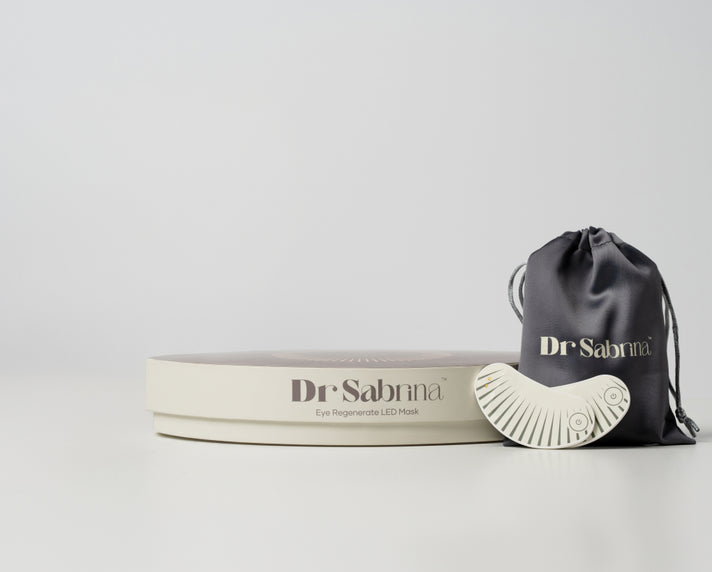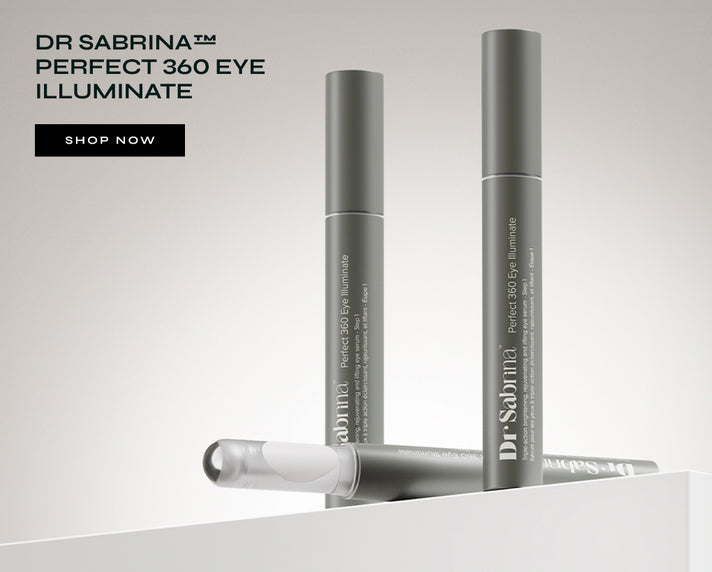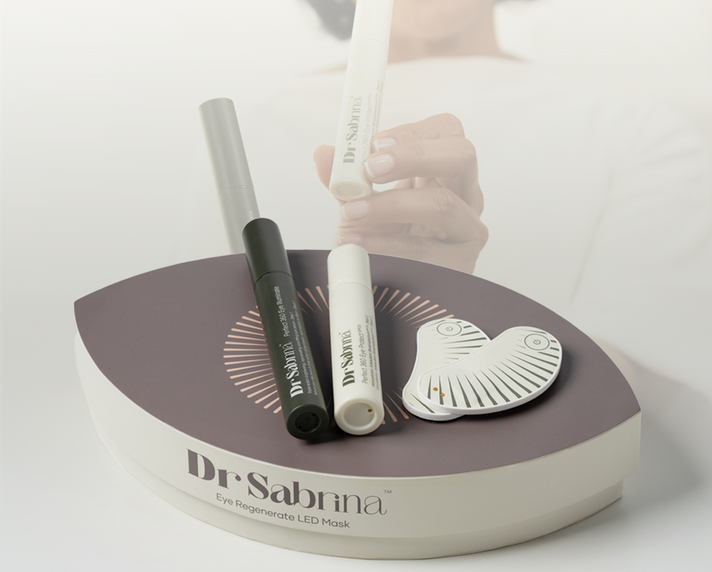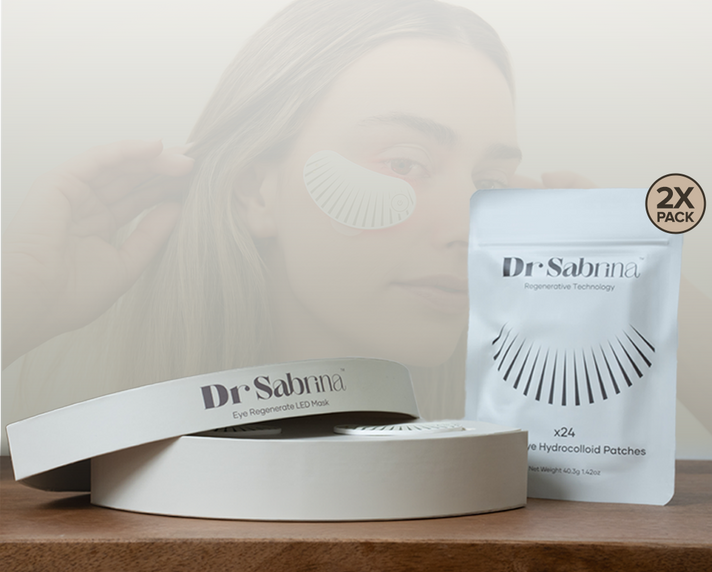Dark Circle
How to Treat Hyperpigmentation?

Hyperpigmentation is a widespread skin issue that can occur in individuals of all types. It presents as brown spots or irregular skin tone due to the overproduction of melanin. Although non-toxic, hyperpigmentation can be unsettling to individuals wanting clear and glowing skin.
In this guide, we will explore how to treat hyperpigmentation, the best methods for how to remove hyperpigmentation, and tips on how to reduce hyperpigmentation for a more even complexion.
Understanding Hyperpigmentation
Before diving into how to fix hyperpigmentation, it's essential to understand its causes. Some common triggers include:
Sun Exposure –
UV rays trigger melanin production, causing sunspots.
Post-Inflammatory Hyperpigmentation (PIH) –
Following inflammation of the skin, such as acne, eczema, or wounds.
Hormonal Changes –
Melasma-type conditions are prompted by pregnancy, birth control pills, or endocrine disorders.
Ageing –
Age spots have formed due to years of solar damage.
Genetics –
Genetics predisposes a few individuals more to pigmentation.
Having listed the causes above, let us now look into how to heal hyperpigmentation successfully.
Top Treatments for Hyperpigmentation
1. Sunscreen – The First Line of Defense
One of the most important steps in how to treat hyperpigmentation is applying sunscreen every day. UV rays exacerbate pigmentation and lead to new dark spots. A broad-spectrum sunscreen with SPF 30+ is essential, even on cloudy days.
2. Topical Treatments for Hyperpigmentation
There are a number of over-the-counter and prescription treatments that work to remove hyperpigmentation effectively:
- Vitamin C – A strong antioxidant that lightens skin and minimises pigmentation.
- Niacinamide – Fades dark spots and fortifies the skin barrier.
- Hydroquinone – A dermatologist-approved ingredient for fading persistent pigmentation.
- Retinoids – Stimulates skin cell turnover to fade discolouration with time.
- Alpha Hydroxy Acids (AHAs) & Beta Hydroxy Acids (BHAs) – Exfoliate the skin and enhance texture.
- Can we add Tranexamic Acid & Arbutin - this is in the literature
3. Professional Treatments
For acute instances, dermatologists provide advanced procedures for how to remove dark spots on face more effectively:
- Chemical Peels – Gently remove outer skin layers to uncover new, smooth-toned skin.
- Laser Therapy – Aimed at melanin depositions to remove pigmentation significantly.
- Microdermabrasion – A safe form of exfoliation to smoothen out the skin.
- Microneedling – Prods the generation of collagen and eventually helps lighten the pigmentation.
4. Natural Remedies
If you want a less harsh method for how to lighten hyperpigmentation, try the following natural ones:
- Aloe Vera – Calms and heals skin.
- Licorice Extract – Inhibits melanin production and whitens skin.
- Green Tea Extract – Has antioxidants which lighten dark marks.
How to Remove Dark Spots on the Face with the Right Skin Care Routine
Consistency in your daily skincare routine order is the key to addressing how to cure hyperpigmentation. Take these steps to maximise results:
Morning Routine
- Cleanser – Apply a mild face wash to cleanse impurities.
- Toner – Balances the pH of the skin and paves the way for serums.
- Vitamin C Serum – Illuminates and shields from environmental stressors.
- Moisturiser – Hydrates and fortifies the skin barrier.
- Sunscreen (SPF 30+) – A non-negotiable measure to avoid developing more dark spots.
Night Routine
- Cleanser – Strips away makeup, dirt, and oil.
- Exfoliator (2-3 times a week) – AHAs or BHAs remove dead skin cells.
- Dark Circle Corrector – If you get dark circles, use a targeted product.
- Retinol or Niacinamide – Fades pigmentation at night.
- Moisturiser – Secures hydration and aids in repair.
By adopting the correct order of skincare routine, you will be able to maximise the efficacy of your treatments for removing hyperpigmentation.
Lifestyle Remedies to Avoid Hyperpigmentation
Apart from treatments, incorporating easy lifestyle changes helps with how to correct hyperpigmentation naturally:
- Wear Hats & Sunglasses – Shield your face from sun exposure.
- Do Not Pick Pimples & Rashes – Popping zits or rubbing rashes worsens pigmentation.
- Eat Foods High in Antioxidants & Stay Hydrated – Promote healing from the inside.
- Sleep Adequately – Supports skin regeneration and minimises stress-induced pigmentation.
Final Thoughts
The answer to how to treat hyperpigmentation requires patience and regularity. With the right skincare, professional care, and sun protection, you can slowly build up clearer, more even skin. Depending on whether you decide to use a dark circle corrector, serums, or in-office procedures, the most important thing is patience.
Frequently Asked Questions (FAQs)
1. How long does it take to treat hyperpigmentation?
Results vary with the severity and treatment employed. Mild cases can improve in 4-8 weeks, and deeper pigmentation can take several months.
2. Can hyperpigmentation clear by itself?
Mild cases, like post-inflammatory hyperpigmentation, can get less noticeable with time. Still, employing the proper skincare products and treatments accelerates the process.
3. What is the ideal ingredient for hyperpigmentation?
Vitamin C, niacinamide, hydroquinone, and retinoids are some of the best active ingredients for removing dark spots and enhancing skin tone.
4. Does exfoliating treat hyperpigmentation?
Yes, periodic exfoliating using AHAs, BHAs, or soft scrubs does away with dead skin cells and helps brightening products penetrate deeper, making them more effective.
5. Is hyperpigmentation permanent?
No, the majority of hyperpigmentation is manageable through proper skin care and clinical treatments. Nevertheless, without protecting your skin from the sun, it will reappear.




















